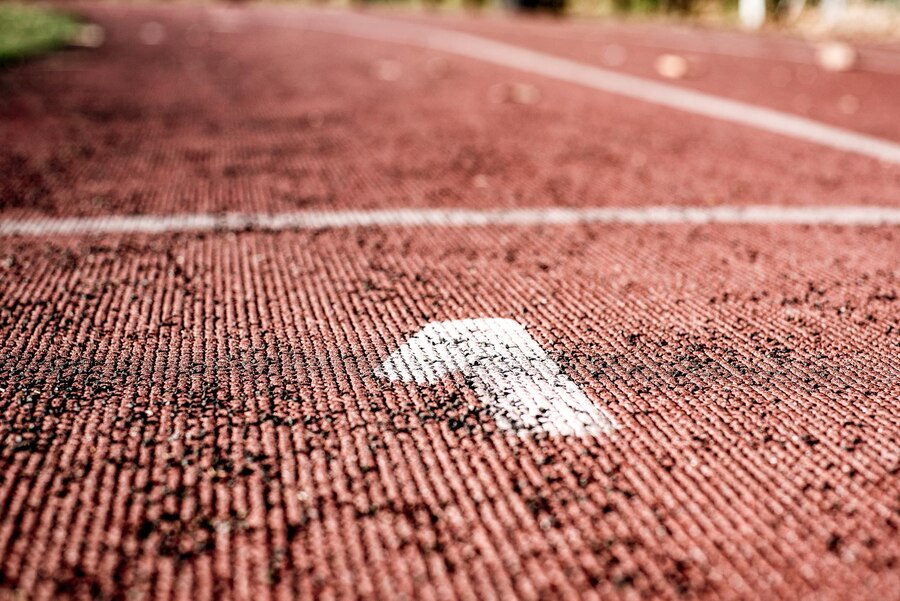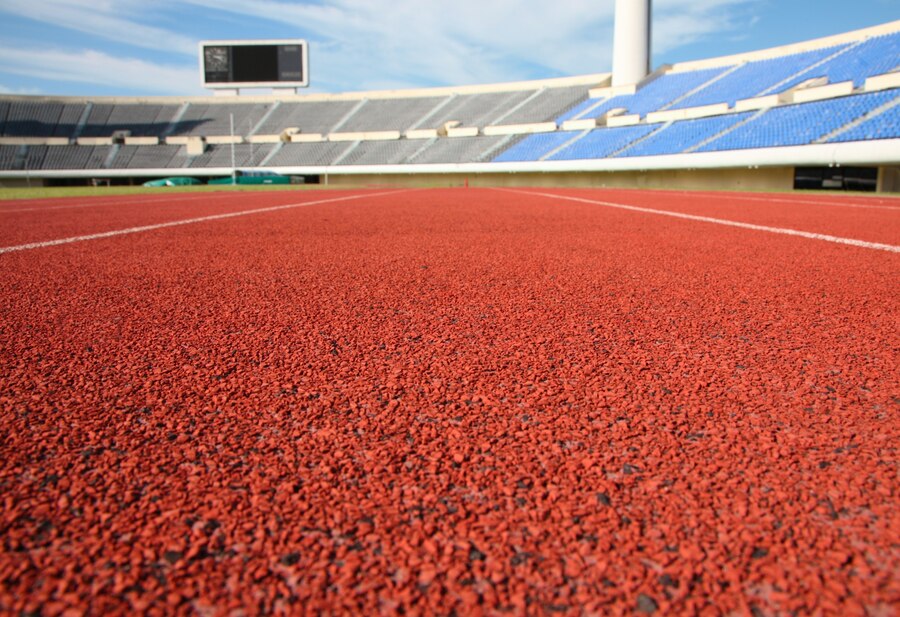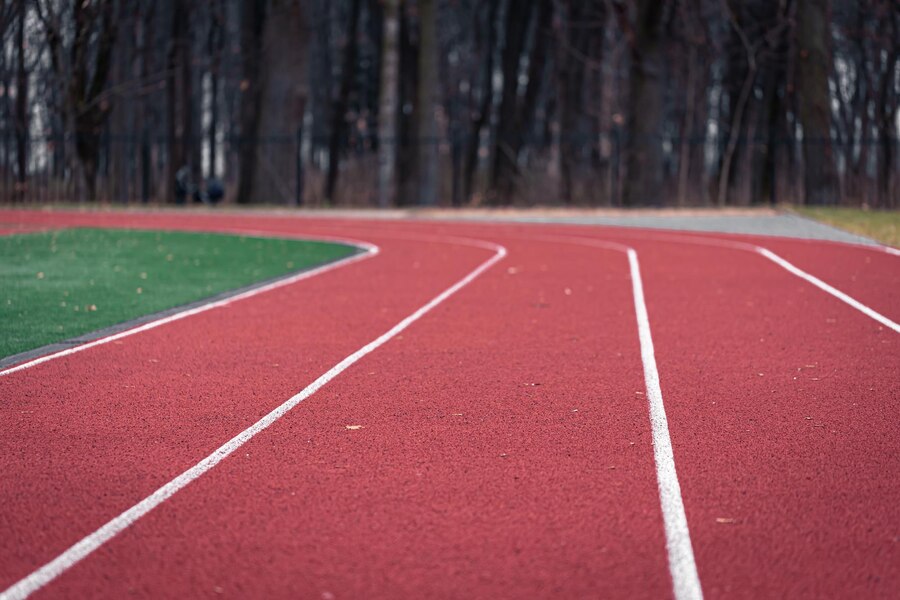How to Choose the Best Running Track Surface
05 Jun, 2024
The material for your running track is the first thing to determine its performance and lifespan. Depending on what surface you decide to go for, your running track can last from a few years to decades and still be as good as new. This article will answer how to choose the best running track surface.

Understanding Different Types of Running Track Surfaces
When you are preparing to build your running track and selecting its material, the choice usually lies between natural (clay or grass) and synthetic (rubber, polyurethane, asphalt) materials. Here is a short breakdown of all these materials:
- Grass or clay – if you decide to go for natural materials, be prepared for quite a demanding maintenance, like watering and trimming for grass or raking and refilling for clay. However, they are relatively cheap and can fit almost any outdoor facility in terms of design.
- Polyurethane – polyurethane is considered the best material for running track surfaces due to its excellent durability, elasticity, and long lifespan. This material is composed of organic units joined by urethane links, due to which polyurethane is exceptionally versatile and often used in running tracks.
- Rubber – rubber running tracks have properties similar to polyurethane while also being relatively low-maintenance. Rubber running tracks are made of rubber granules (often produced with natural materials or older recycled rubber) and polyurethane-inclusive binder.
- Asphalt – asphalt is a relatively cheap and quick material to install while still being suitable for a variety of sports, like bike racing or casual games. On the other hand, it is pretty harsh on athletes’ joints and muscles due to how hard it is and prone to forming tracks and potholes.
It is crucial to understand different types of running tracks and what they are made of to find the best running track material for your needs.
Key Factors to Consider
The first and the most vital aspect of your running track is how well it performs under athletes’ feet and how safe they are on it. Hard materials like asphalt seem to be the worst choice here for the following reasons:
- Rugged and solid surfaces lead to higher loads on runners’ joints.
- Fall can lead to a severe injury.
- Runners can trip over and fall because of cracks and potholes.
On the other hand, natural materials like grass and clay are way safer and rarely cause an injury after a fall. However, they often don’t provide sufficient friction for runners and are also incredibly dependent on weather conditions (grass and clay are practically unusable after rain).
The apparent winners are rubber and polyurethane, though there are some nuances here, too. While both materials provide excellent friction for athletes to run and a soft surface to fall on safely, polyurethane is superior in resilience and shock absorption.
Performance and Athlete Safety
The first and the most vital aspect of your running track is how well it performs under athletes’ feet and how safe they are on it. Hard materials like asphalt seem to be the worst choice here for the following reasons:
- Rugged and solid surfaces lead to higher loads on runners’ joints.
- Fall can lead to a severe injury.
- Runners can trip over and fall because of cracks and potholes.
On the other hand, natural materials like grass and clay are way safer and rarely cause an injury after a fall. However, they often don’t provide sufficient friction for runners and are also incredibly dependent on weather conditions (grass and clay are practically unusable after rain).
The apparent winners are rubber and polyurethane, though there are some nuances here, too. While both materials provide excellent friction for athletes to run and a soft surface to fall on safely, polyurethane is superior in resilience and shock absorption.
Durability and Weather Resistance
A sound running track must last and not lose its properties or deform under external stressors. The main factors that you need to be aware of are:
- Foot traffic – the purpose of any running track is to be run or walked on, so choosing the suitable material is crucial. Natural materials tend to wear off in high-traffic areas, like asphalt, which is prone to cracking. Rubber performs better, but be aware that depending on the quality and formulation of your rubber, it can tear in busy areas. Polyurethane, on the other hand, tends to resist and maintain performance even under the heaviest foot traffic.
- Temperature variations – UV radiation doesn’t affect natural materials, making them even sturdier and drier; however, temperature fluctuations can make them muddier or too rigid. Asphalt expands and contracts under rapid temperature changes, leading to cracks. Rubber is generally resistant to high temperatures, but prolonged exposure to UV radiation may affect its longevity. Polyurethane is highly resistant to UV radiation and temperature fluctuations and practically doesn’t harm it.
- Moisture – any moisture turns natural running track surfaces into a muddy mess, making it impossible to perform on them. On the other hand, rubber and polyurethane are practically invincible to moisture, yet it’s better to take care of the drainage system to prolong their lifespan. Asphalt can become quite slippery when wet, and water penetration leads to cracks and surface deterioration over time.
- Incorrect usage – activities outside of running impose different threats on running track surfaces, leading to severe damage to grass or clay. On the other hand, synthetic materials are practically invulnerable to non-athletic applications, though, in the case of rubber, they should be limited as they can cause tears.

Maintenance and Upkeep
Different materials require different levels of upkeep, resulting in various efforts and money spent over time. Rubber and polyurethane are the most low-maintenance materials, requiring no more than an occasional cleaning and repair. Asphalt, on the other hand, is a pretty high-maintenance material, needing regular crack sealing and resurfacing. Natural materials are the most high-maintenance, requiring mowing, watering, raking, refilling, and soil treatments.
Track Usage (Competition vs. Training)
Different tracks are installed in different facilities designed for training or competition. However, their quality could be better, and cheap materials like grass, clay, or asphalt suit training facilities. On the other hand, if your amenity is designed for professional competition, rubber and polyurethane are your only choices due to their superior performance and consistency of results.
Athlete Preferences and Special Requirements
Athletes’ preferences are another crucial consideration while designing your running track. Ideally, you should consult with all the potential users of your facility before constructing the running track. However, according to the World Athletic’s Track and Field Facilities Manual, polyurethane is the most consistent choice for most athletes.

Budget Considerations
Last but not least, make sure to include the price of the material in your budget. Here is a breakdown of the approximate prices of all the materials mentioned above:
Running track surfacing material | Cost to install (per square foot) |
Grass | $3-8 |
Clay | $5-12 |
Rubber | $8-16 |
Polyurethane | $10-30 |
Asphalt | $3-7 |
However, keep in mind that lower upfront costs don’t mean that the material is cheaper in the long run, as low-cost materials tend to require much more maintenance and resurfacing, and their lifespan is shorter, so try to find the balance between affordable installation and adequate maintenance spending.
Final Words
Selecting the suitable running track surface for your sports project is paramount for longevity and optimal athletic performance. While cost-effective, natural materials like grass and clay demand extensive maintenance and are weather-dependent, making them not the best running track surface. Asphalt, though economical, poses challenges for joint impact and is prone to damage. Rubber, resilient and low-maintenance, competes with polyurethane, the standout choice for durability and athlete safety. Polyurethane’s superior shock absorption and friction make it athletes’ preference and the best material for running track surfaces, ensuring consistent performance. Investing in quality materials upfront pays dividends in the long run, ensuring a track that endures time and training intensity.
